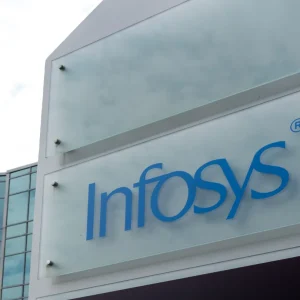
Historically, banks used to have their in-house data centre, run their own services and keep everything on premise.
However, today things have changed and colocation services are being sought after by banks who need to focus on banking and not IT.
Speaking to CBR, Rob Garbutt, CEO at data centre provider LDeX Group, said: "UK banks seem to be disposing of their self-owned and operated data centre estates in favour for colocating in a third-party data centre."
Garbutt said the reason for this shift is most likely to move away from a capital expenditure (CAPEX) model towards an operating expenses (OPEX) one, whereby colocation is rented from third-party data centres.
"The benefits of this include the ability to increase and decrease their storage space, power and cooling requirements without the need for large volumes of capital.
"It also negates the requirement to manage a large property portfolio and its associated overheads as well as infrastructure maintenance and the refresh of aging M&E."
To keep banking sector ICT services and others running, data centres need to be secure, offer a great deal of performance and scalability capacities, a solid backup and disaster recovery strategy, and so on.
The shift away from owning their own facilities seems to be not only noticed by colocation providers, but also by big comms companies like CenturyLink.
The company’s EMEA regional sales director for financial services, Jay Hibbin, also spoke to CBR, saying that "running a DC is not the core business of a bank" and that that is one of the reasons why we are seeing this major shift.
He said: "The process is too capital intensive to keep investing in and growth of IT estate is no longer a given in a more uncertain world.
"After the banking crisis, most banks have recapitalised, and focused their capital budget on achieving capital adequacy ratios putting pressure on maintaining DC assets."
Hibbin also hinted that from a demand perspective, the end of a long bull run has meant an end to certain growth, and banks now operate in a much more uncertain world.
"There is no guarantee of continuous growth in new trading types – and there is also huge macroeconomic uncertainty leading to a much greater need for agility and flexibility.
"At the same time, there is the broader move to cloud computing, which banking is not immune from, which diverts IT away from DC assets to off premise locations."
He also said that there is more and more pressure to move applications from hosted data centre environments into a cloud estate to stay more agile.
However, not everyone in the industry is seeing a decline in ‘banking data centres’ business. Asset management company Trackit Solutions, who works with the likes of Bank of England, Citi, Credit Suisse, Lloyds, and Santander, is seeing its business boom.
Also speaking to CBR, Trackit’s CEO Steve Beber said: "Banks are not getting rid of their data centres, they are going through an evolution – virtualisation, private cloud, etc.
"Banks are conservative, they are not like Internet companies (Facebook, Google, etc.) They still have legacy mainframe systems which are still being used for mainstream banking."
"The issue is not about getting rid of their data centres , but more about reducing the capital cost of running legacy inefficient data centres and also the impact of virtualisation.
"Banks have a choice, they can refurbish their existing sites (costly), develop new sites (even more so) or look at migrating their systems to newer locations (wholesale colo – cheapest)."
As the banking industry shifts its attention to the wholesale data centre, Beber sees colotation providers like Equinix or Digital Realty as some of the main players in this field.
"They are the guys that are trying to attract these types of customers with big data halls with power, cooling and network connectivity, located in areas which are close to the city."
Click next to find what banks are looking for in the digital age.
What are banks in the digital age looking for?
A data centre should be at the centre of a bank’s financial activity. Data centre solutions "worth their salt" have to handle the vast quantities of data processing within a bank, also acting as a linchpin for data connectivity between global branches and sub-branches.
That is according to Marcus Jewell, VP EMEA at Brocade, who told CBR that the challenge facing multiple industries is ensuring solutions are in place to increase response times, streamline workflows and support rapid, dynamic expansion.
He said: "Banks need to consider their IT and data centre infrastructure carefully – it could be the difference between leading the charge with agile, scalable business growth and falling behind savvier competitors."
As a result, speed and reliability, allied with hosting cost reductions is at the core of the new banking data centre model.
John Procter, VP EMEA sales at Rocket Software, also told CBR that "horror stories" where banks have not been able to provide customers with core services can be avoided. "99.999% resilience is not optional."
However, that is not all. Data centres today also have to look into offering a hybrid model when trying to attract banks to their servers.
Greg McCulloch, CEO at colo Aegis Data, told CBR: "It is key for banks to be able to offer a hybrid model allowing banks to store sensitive customer data within an off-the-shelf banking system, nested in their physical data centre.
"Additionally, banks should be able to offer cloud services which are able to meet EU regulations."
Solid proven management and operational standards, very high availability, and auditable, compliant security, are also key factors for data centres trying to attract banks.
According to CenturyLink’s Hibbin, " The selling pitch is often centred around flexibility and the ability to flex into other services, as well as the ability to transform an estate and not be locked into a DC. The outlook is uncertain for the foreseeable future in many ways and clients need to know that what works for them today can move to a different set of services without major disruption."
Security is another key aspect, not only for banks but also to any other organisation looking into entering a wholesale data centre.
LDeX’s CEO Garbutt said that security is a big factor, with ISO27001 accreditation being a must in addition to physical security , such as CCTV systems, door access control systems, security guards, fencing, and exits to prevent access to unauthorised personnel and record who goes in and out.
He said: "When it comes to these systems, biometric access using facial, finger print or retina authentication is preferred as this is more secure. All this information should also be backed up to a disaster recovery site as a minimum."
Infrastructure redundancy is another requirement that is high on the priority list of a UK bank when choosing a third-party data centre.
Garbutt said: "Multiple incoming feeds from the national grid, redundant switchgear, N+N generator and UPS infrastructure, N+1 cooling, fire suppression and redundant telecommunications topology are all favoured designs to ensure minimal downtime and system maintenance without breaks in the power to their servers."
Click next to read the experts’ future megatrends predictions for the banking industry regarding data centres.
5 experts share their predictions on the future of banks and data centres
Jay Hibbin, Regional Sales Director, Financial Services, EMEA at CenturyLink EMEA
"Automation is the key trend: driving efficiency through increased automation of tasks across the IT estate from patching a device to building a physical machine.
"This can also include anything from applying security patches to upgrading devices to doing backups. A lot of those tasks were often manual tasks run by data centre owners and IT managers and have now been automated within software."
Rob Garbutt, CEO and co-founder for data centre provider LDeX Group
"Less manual invention will dramatically reduce errors and improve the efficiency of repeatable tasks – an opportunity that the banking industry will be keen to leverage on.
"There will be operational efficiency in driving down costs with automation and this will be key as banks move forward into the future."
Greg McCulloch, CEO, Aegis Data
"There will be a big move to using third-party data centres to switch from a capital expenditure (CAPEX) model to an operating expenses (OPEX) model.
"Whether UK banks begin to utilise the cloud offerings out there remains to be seen due to perceived security risks and retaining control and ownership over their server hardware."
John Procter, Vice President of EMEA sales, Rocket Software
"Investing vast internal resources into technology to provide the right level of speed, security and reliability of service is something that many banks are just going to free themselves from.
"We are going to see a big move towards outsourcing and also to cloud solutions, as well as the use of software-as-a-service (SaaS). I think that the use of SaaS in particular will grow, as younger employees are more skilled in this solution than mainframe hardware. "
Steve Beber, CEO Trackit Solutions
"The future megatrend for banks is to have a private cloud in their own or wholesale colo facility."






